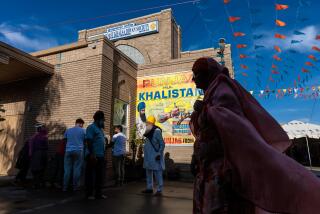Chile’s coast haunted by fear, desolation
Barely a building remains standing in this once-pleasant beach resort that slopes up from Dichato Bay, a scenic cove largely shielded from the open Pacific.
The row of eateries and bars that once lined the shore are smashed to pieces. The central plaza is a pile of debris: splintered wood beams, bent metal roofs, dented gas tanks, fences, broken trees and kitchen appliances, among other objects. Fishing boats have been tossed a mile into town and beyond.
The magnitude 8.8 earthquake that struck Chile last week clearly caused a lot of damage, but here and in other coastal communities it was the ensuing tsunami that proved most destructive.
Residents in Dichato said the waves came ashore between the headlands over several hours, engulfing houses, boats, cars and everything else in their way.
Dichato’s official count -- 17 people dead, 40 to 50 missing -- seemed likely to rise in what was once a town of 5,000. The stench of decomposing bodies emanates from collapsed structures, prompting visitors to don surgical masks.
Sandra Pizarro, 41, of Santiago, whose parents’ home in Dichato was long the family vacation spot, walked along the debris-strewn shore with her brother, Jose Pizarro, 43. They could hardly believe what had happened to the popular wading and sailing spot.
“This was a quiet, lovely town, a beautiful place for children,” she said. “There was hardly ever a wave of more than a few inches.”
Whereas much of the public attention has focused on extensive damage and loss of life in cities such as Concepcion and Constitucion, small coastal towns like Dichato were also ravaged.
Residents said aid and security were even slower to arrive here than in the cities, where the Chilean government’s tardy response to the disaster has been criticized.
People here said they saw organized bands of looters arriving in vehicles the day after the quake hit, systematically carting away valuables from homes and shops. Such scenes were repeated across the vast quake zone, stretching along more than 400 miles of coast and at least 50 miles inland.
“The looters took everything, even the metal from the frames of homes,” said Bernardo Escobar, 58, one of the few residents to reclaim their homes in the low-lying area of town.
Escobar pointed out a mark on the exterior of his home where the surging seawater had reached, well over 6 feet from the ground. The family found a foot of mud in the home, along with dead fish and other debris.
Escobar and his wife, like others, fled to higher ground as the quake jolted them awake early on Feb. 27. But they decided to return a day later and try to protect their home from looters.
An elderly relative, Rosalia Andrade, the aunt of Escobar’s wife, also decided to return to her home, but prematurely, it turned out. She went back down to her residence about 10 a.m, nearly seven hours after the quake. The last large wave swept her away and she drowned, said Escobar, who later identified her body.
In the evenings, the couple sits outside on the rubble-strewn street beside a wood fire, chatting with police and army personnel. They must rely on donated food for their sustenance.
The hills outside town are dotted with makeshift camps of displaced Dichato residents. Some bear the now-ubiquitous signs: “We need food.”
At a small clinic set up above town, Dr. Lientur Vasquez, from the nearby city of Tome, provides aid. Many have stepped on nails and need tetanus shots, he says. Others are stressed and seek sedatives.
Marisa del Carmen Cruz, a mother of four, waited for treatment with her 7-year-old daughter, her husband and her sister-in-law. She recounted the terrifying escape in the dark to higher ground after the earthquake struck at 3:34 a.m.
“It was horrifying,” said Cruz, whose entire family survived, fleeing to the hills. “People in their pajamas. People barefoot. All desperate to save their lives.”
Her house was swept away, as was that of her sister-in-law. Only the foundations remain. Like others, Cruz has no intention of rebuilding in the low-lying part of town and risking another tsunami.
“Where we’re going to live, I don’t know,” Cruz said. “But we’re not going back. No more.”
patrick.mcdonnell @latimes.com
More to Read
Start your day right
Sign up for Essential California for news, features and recommendations from the L.A. Times and beyond in your inbox six days a week.
You may occasionally receive promotional content from the Los Angeles Times.






